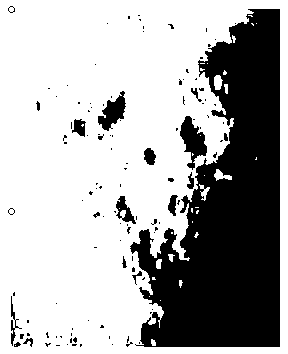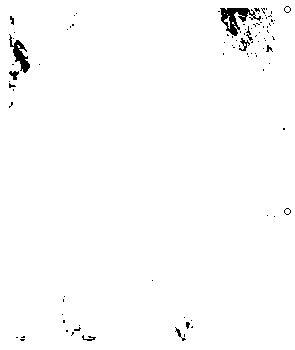Preparation method of cellulose ultra-strong water-absorbent resin
A technology of water-absorbent resin and cellulose is applied in the field of preparation of water-absorbent resin to achieve the effects of satisfying application requirements, mild process conditions and simple preparation method
- Summary
- Abstract
- Description
- Claims
- Application Information
AI Technical Summary
Problems solved by technology
Method used
Image
Examples
Embodiment 1
[0019] Take 100g of cellulose with a particle size of 125 microns, add 500g of deionized water, stir for 30min, add 6g of aluminum hydroxide with a particle size of 50 microns , Raise the temperature to 60°C, then add 0.5g of (NH 4 ) 2 S 2 o 8 Stir with 110g of sodium acrylate aqueous solution until uniform, heat up to 85°C for reaction, stop heating, cool to room temperature, wash with deionized water three to four times and dry at 105°C for 24 hours , synthetic superabsorbent resin. The water absorption of synthetic resin was determined according to the method described in the literature (SM Ma, MZ Liu, LX Cao, et al. Funct. Polym., 2003, 16: 502-506). The resin synthesized by the above method is measured, and the water absorption rate reaches 975g per gram of resin. The appearance of the product and resin after absorbing water can be seen figure 1 and figure 2 .
Embodiment 2
[0021] Take 100g of cellulose with a particle size of 150 microns, add 700g of deionized water, stir for 30min, add 9g of aluminum hydroxide with a particle size of 10 microns , Heat up to 60°C, then add 4g of (NH 4 ) 2 S 2 o 8 and 150g of sodium acrylate aqueous solution, stirred until uniform, heated up to 90°C, when gel-like viscous appeared during the reaction, stop heating, cooled to room temperature, washed three to four times with deionized water and dried at 100°C for 24h, The resulting resin can absorb 910 grams of water per gram.
Embodiment 3
[0023] Take 100 g of cellulose with a particle size of 177 microns, add 700 g of deionized water, stir for 30 minutes, add 5 g of aluminum hydroxide with a particle size of 30 microns, heat up to 50 ° C, and then add 3 g of (NH 4 ) 2 S 2 o 8 Stir with 160g of sodium acrylate aqueous solution until uniform, heat up to 70°C for reaction, stop heating, cool to room temperature, wash with deionized water three to four times and dry at 90°C for 24 hours , The obtained resin can absorb 960g of water per gram.
PUM
| Property | Measurement | Unit |
|---|---|---|
| particle size | aaaaa | aaaaa |
| water absorption | aaaaa | aaaaa |
| water absorption | aaaaa | aaaaa |
Abstract
Description
Claims
Application Information
 Login to View More
Login to View More - Generate Ideas
- Intellectual Property
- Life Sciences
- Materials
- Tech Scout
- Unparalleled Data Quality
- Higher Quality Content
- 60% Fewer Hallucinations
Browse by: Latest US Patents, China's latest patents, Technical Efficacy Thesaurus, Application Domain, Technology Topic, Popular Technical Reports.
© 2025 PatSnap. All rights reserved.Legal|Privacy policy|Modern Slavery Act Transparency Statement|Sitemap|About US| Contact US: help@patsnap.com


